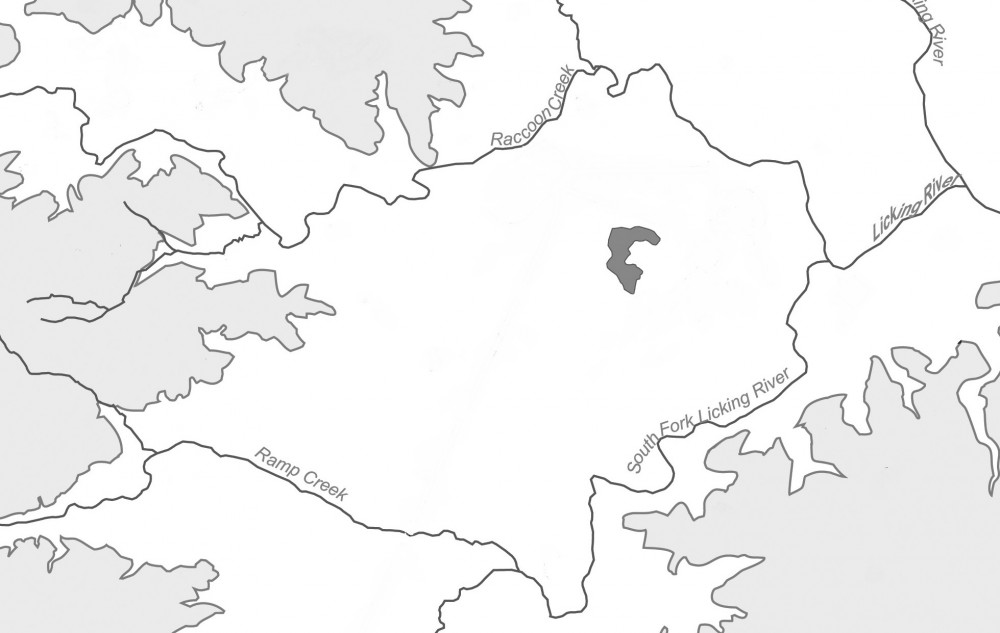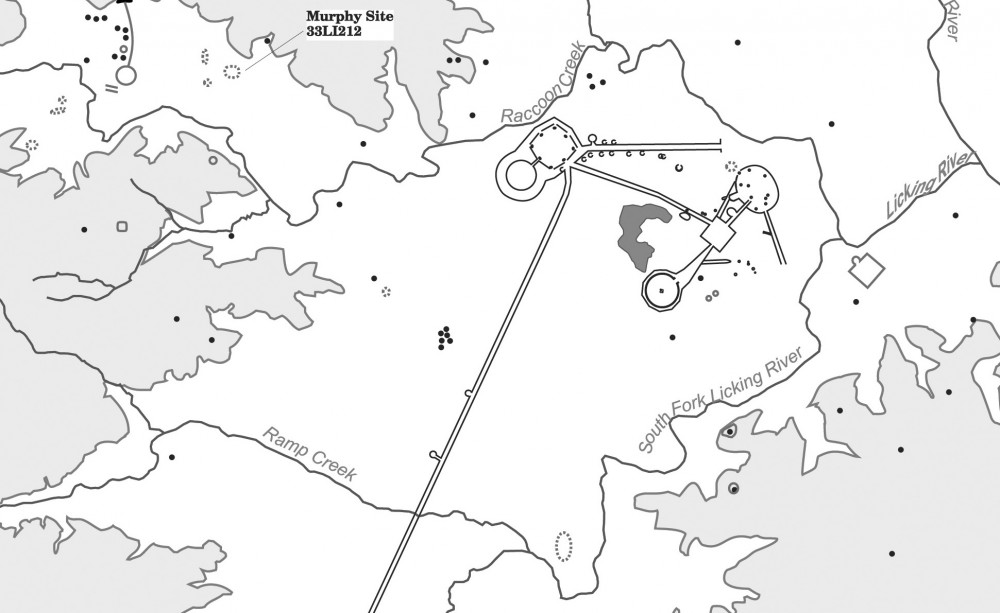One of the most difficult things to accept about Hively and Horns hypothesis of hilltop anchors for the astronomical alignments at Newark is how the Hopewell architects could have incorporated these topographic elements into the already complicated geometry and astronomy of the earthwork design. After I explained the idea to one of my non-archaeologist colleagues, he said, [expletive deleted]! Did they build the hills, too?! And, indeed, it almost seems like they must have done so to have achieved this level of integration in the overall composition.

The Raccoon Creek Valley with the Newark Earthworks removed from the landscape.
But I think the principal reason it seems that way is that we have trouble envisioning the Raccoon Creek Valley without the Newark Earthworks. Two-thousand years ago, when the Hopewell earthwork designer(s) came to Newark from the Scioto Valley it was a broad, roughly-triangular-shaped plain covered in prairie and surrounded by streams. Beyond the streams was a network of forested hills. Beyond the hills was the dome of the sky. The Hopewell sky-watchers would have sought out the highest hills and watched. From their many decades of watching the skies over the Scioto Valley, they already understood the complicated apparent motions of the Sun, Moon, planets and stars as they majestically arced overhead, so it may have taken only a decade or two of observations here to establish the precise points on the horizon marking the key turning points in the lunar cycle. Sightlines extending from these hills provided a complicated web of intersecting lines that could be overlaid upon the blank canvas of the valley below — like lines on a piece of graph paper. Then the architects could have selected the appropriate design elements from the traditional repertoire of geometric shapes, worked out over the previous century and more, and laid them out upon that grid of alignments until they achieved their piece de resistance, a remarkable harmony of geometry, astronomy, landscape, and architecture of unprecedented size and uncanny sophistication creating, what I have called, a ceremonial machine a North American Kaaba, Sistine Chapel, and Principia all rolled into one.

The Newark Earthworks spread across what Ephraim Squier and Edwin Davis referred to as that “remarkable plain.”
For further reading:
Hively, Ray and Robert Horn 2013 A new and extended case for lunar (and solar) astronomy at the Newark Earthworks. Midcontinental Journal of Archaeology 38(1):83-118. Lepper, Bradley T. 2004 The Newark Earthworks: monumental geometry and astronomy at a Hopewellian pilgrimage center. In Hero, Hawk, and Open Hand: American Indian art of the ancient Midwest and South, edited by Richard V. Townsend and Robert V. Sharp, pp. 72-81. The Art Institute of Chicago and Yale University Press, New Haven. 2010 The ceremonial landscape of the Newark Earthworks and the Raccoon Creek Valley. In Hopewell Settlement Patterns, Subsistence, and Symbolic Landscapes, edited by Martin Byers and DeeAnne Wymer, pp. 97-127. University Press of Florida, Gainesville.
Notifications